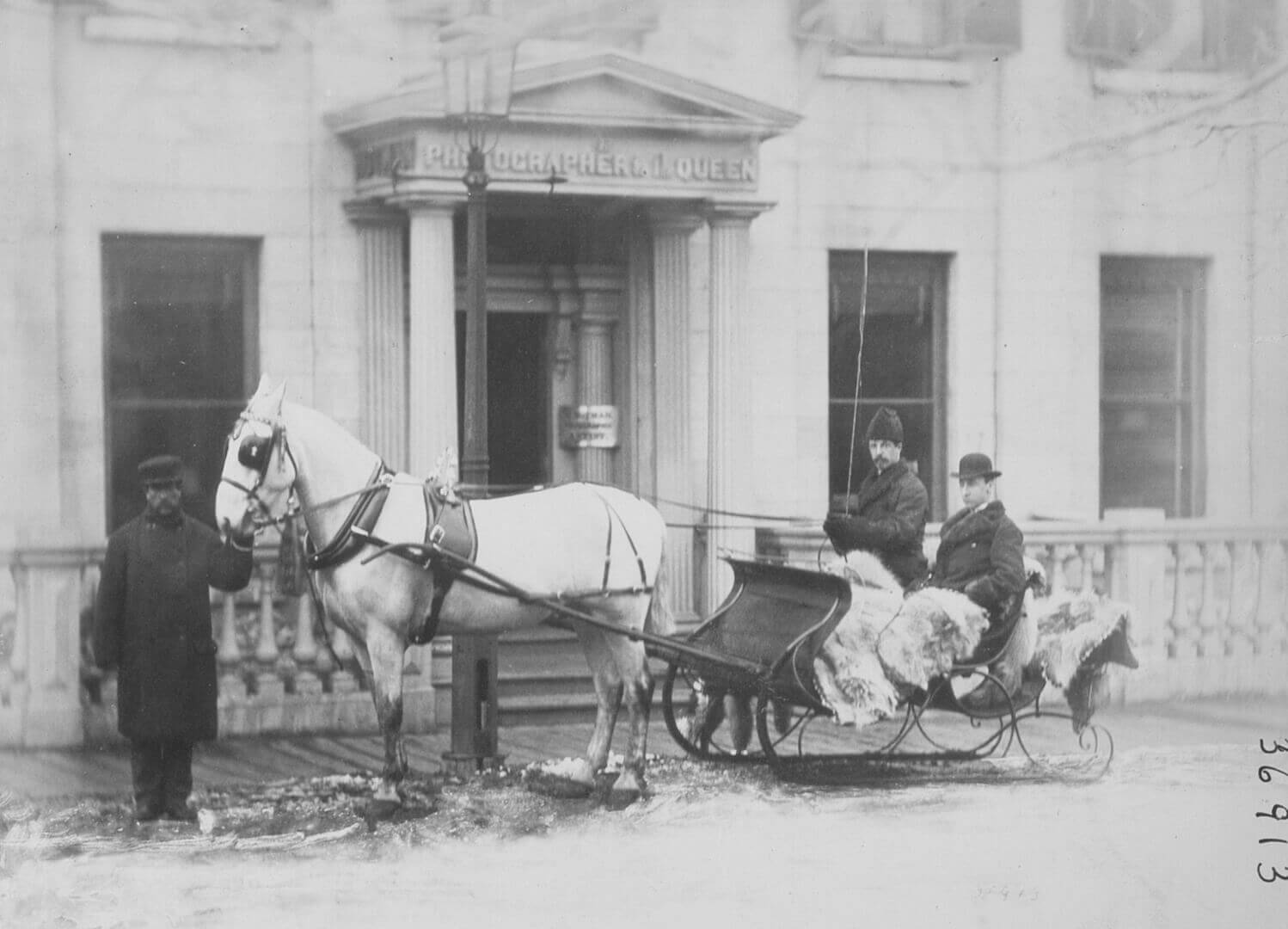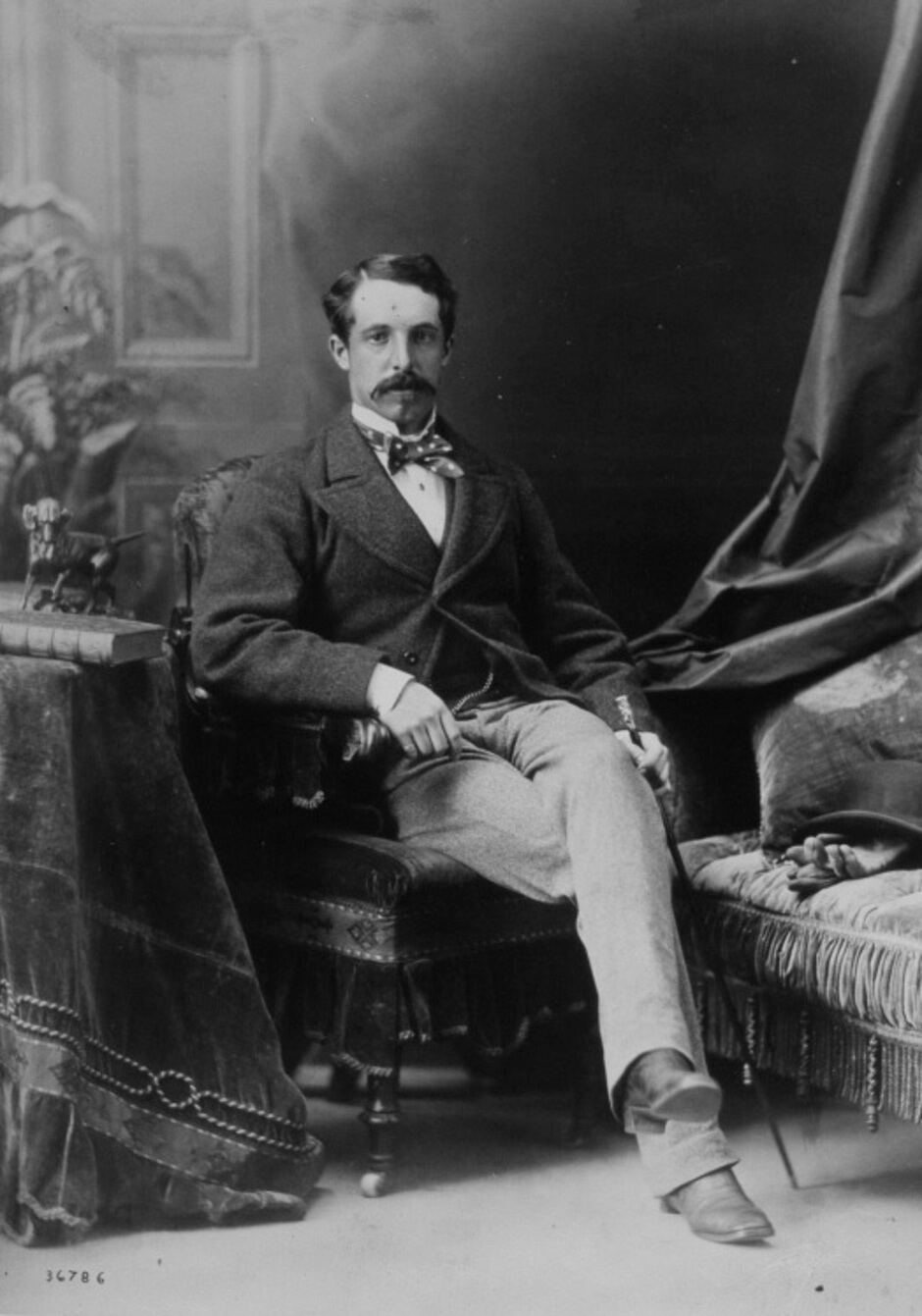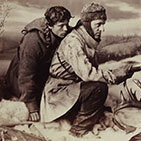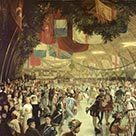Mr. Collins’ Sleigh at Notman’s Studio, Bleury Street 1868–69

William Notman, Mr. Collins’ Sleigh at Notman’s Studio, Bleury Street, Montreal, 1868–69
Silver salts on paper mounted on paper, albumen process, 12.7 x 17.8 cm
McCord Museum
Outdoor photographs were difficult and awkward, especially in winter. The wet plate negative would have to be prepped inside, rushed out to the street, exposed, and then rushed back inside to be developed before the emulsion dried. But Notman found that it was worth the trouble. Clients posed in front of Notman’s studio, under the banner “Photographer to the Queen.” The sleigh added another status symbol and a touch of Canadiana to the image.

Mr. Collins had several sittings with Notman in the late 1860s and early 1870s. One set of interior portraits of Collins taken around the same time shows a jauntily dressed youngish man with an impressive moustache, neatly parted hair, a polka-dotted bowtie, and a walking stick. The interior portraits are quite dark and picture him reclining slightly in a low chair surrounded by heavy Victorian drapery and furniture. The effect is not necessarily formal but rather weighty and solemn. Hat and gloves have been discarded on a nearby settee, but they remain in the picture, their removal marked for the camera. Collins seems to have made a concerted effort to appear comfortable in his own skin, though there is something oddly preening about his pose.
It is interesting to consider the outdoor portrait as part of the ongoing relationship that Notman had with Collins and with many of his sitters. The number of examples in the archives suggests that it became very popular and even fashionable to submit to a winter portrait outside Notman’s studio. This outside scene is as carefully designed as the studio photos to project bourgeois success. The outdoor image seems especially stiff; the lack of head and body rests would not have helped. The display of sleighs, furs, and servants is more conspicuous than the little details of dress and deportment that Notman weaves into his studio scenes. The lack of a strong focal point in the outdoor scene allows our attention to wander to the surrounding scene. For both Notman and his sitters this may not have been an issue. Perhaps the focal point for the image was the slogan “Photographer to the Queen.” Together, sitter and photographer carefully construct their personae as comfortably successful urban professionals.

 About the Author
About the Author
 More Online Art Books
More Online Art Books
 Acknowledgements
Acknowledgements